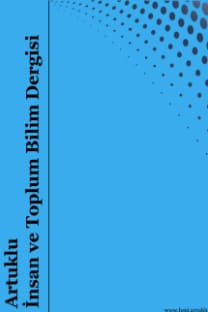Keçilerin Evcilleşme Süreci ve Tenneesse Keçileri
Tarım ve hayvan yetiştiriciliğinde Neolitik Dönem’de meydana gelen evcilleştirme süreci, insanların yaşan konforunda artışa neden olmuştur. Buğday, pirinç gibi bitkiler başta olmak üzere köpek ve keçi, evcilleştirilen anahtar türler olarak yer almaktadır. Keçiler çiftlik hayvanı olarak evcilleştirilen ilk türlerdi. Tarımda kolaylık sağlamak, besin olarak tüketmek için keçiler seçkin hayvanlar olmakla birlikte dinsel ve mitolojik açıdan da insanlar için önemli bir konumda yer almaktaydı. Evcilleştirme sürecinde insanlar hayvanlar ve bitkiler üzerinde istedikleri özellikleri seçmişlerdir. Başlangıçta bilinçli olarak gerçekleştirilmeyen bu eylem Darwin’in Türlerin Kökeni adlı eserinde ilk kez ‘yapay seçilim’ olarak adlandırılmıştır. Yapay seçilim avantaj sağlarken aynı zamanda bazen tür için bazen de ekolojik olarak dezavantajlar doğurmaktadır. Kas gücü yüksek, parazite karşı dirençli uysal Tenneesse keçileri de yapay seçilim sonucu ‘konjenital miyotoni’ adı verilen bayılma hali oluşmuştur. Bu durum bir mutasyon olarak nitelendirilmektedir.
Anahtar Kelimeler:
Yapay Seçilim, Evcilleşme, Tarım, Mutasyon
___
- Amills M, Capote J, Tosser-Klopp G. (2017). Goat domestication and breeding: a jigsaw of historical, biological and molecular data with missing pieces. Anim Genet, 48(6), 631–644.
- Amills M, Ramírez O, Tomàs A, ve ark. (2009). Mitochondrial DNA diversity and origins of South and Central American goats. Anim Genet, 40(3), 315–322.
- Bohlken H. (2010). Haustiere und Zoologische Systematik. Zeitschrift für Tierzüchtung und Züchtungsbiologie, 76(1-4), 107-113. Bryant SH. (1979). Myotonia in the Goat. Ann N Y Acad Sci, Vol. 93, pp. 11248-11252.
- Bryant SH, Conte-Camerino D. (1991). Chloride channel regulation in the skeletal muscle of normal and myotonic goats. Pflügers Arch Eur J Physiol, 417(6), 605–610.
- Conner JK. (2016). Artificial Selection. Encyclopedia of Evolutionary Biology. Elsevier Inc, vol. 1, pp. 107–113.
- Driscoll CA, Macdonald DW, O’Brien SJ. (2009). From wild animals to domestic pets, an evolutionary view of domestication. Proc Natl Acad Sci U S A, 106 Suppl 1(Suppl 1), 9971–9978.
- Daly KG, Delser PM, Mullin VE, ve ark. (2018). Ancient goat genomes reveal mosaic domestication in the Fertile Crescent. Science, 361(6397), 85–88.
- Fernández H, Hughes S, Vigne JD, ve ark. (2006). Divergent mtDNA lineages of goats in an Early Neolithic site, far from the initial domestication areas. Proc Natl Acad Sci U S A, 103(42), 15375–15379.
- Groeneveld LF, Lenstra JA, Eding H, ve ark. (2010). Genetic diversity in farm animals - a review. Anim Genet, 41 Suppl 1, 6–31.
- Hatziminaoglou Y, Boyazoglu J. (2003). The goat in ancient civilisations: From the Fertile Crescent to the Aegean Sea. Small Ruminant Research. Elsevier.51(2), 123-129.
- Haenlein GFW. (2007). About the evolution of goat and sheep milk production. Small Rumin Res, 68(s 1–2):3–6.
- Kaminski J, Riedel J, Call J, Tomasello M. (2005). Domestic goats, Capra hircus, follow gaze direction and use social cues in an object choice task. Anim Behav, 69(1), 11–18.
- Kruska DCT. (2005). On the Evolutionary Significance of Encephalization in Some Eutherian Mammals: Effects of Adaptive Radiation, Domestication, and Feralization. Brain Behav Evol, 65:73–108.
- Larson G, Burger J. (2013). A population genetics view of animal domestication. Trends Genet, 29(4), 197–205.
- Lossin C, George AL. (2008). Chapter 2 Myotonia Congenita. Adv Genet, 63, 25–55.
- Luikart G, Gielly L, Excoffier L, Vigne JD, Bouvet J, Taberlet P. (2001). Multiple maternal origins and weak phylogeographic structure in domestic goats. Proc Natl Acad Sci U S A, 98 (10) 5927-5932.
- Lush JK. (1930). “NERVOUS” GOATS. Oxford Journal.
- Mignon-Grasteau S, Boissy A, Bouix J, ve ark.. (2005). Genetics of adaptation and domestication in livestock. Livestock Production Science. Vol 93, Elsevier:3-14.
- Naderi S, Rezaei H-R, Taberlet P, Zundel S, Rafat S-A, Naghash H-R, ve ark. (2007). Large-Scale Mitochondrial DNA Analysis of the Domestic Goat Reveals Six Haplogroups with High Diversity. PLoS ONE 2(10): e1012.
- Nomura K, Yonezawa T, Mano S, ve ark. (2013). Domestication Process of the Goat Revealed by an Analysis of the Nearly Complete Mitochondrial Protein-Encoding Genes. PLoS One, 8(8), e67775.
- Price EO. (1999). Behavioral development in animals undergoing domestication. Appl Anim Behav Sci, 65, 245-271.
- Ropiquet A, Hassanin A. (2006). Hybrid origin of the Pliocene ancestor of wild goats. Mol Phylogenet Evol, 41(2):395-404.
- Sun C, Tranebjærg L, Torbergsen T, Holmgren G, Van Ghelue M. (2001). Spectrum of CLCN1 mutations in patients with myotonia congenita in Northern Scandinavia. Eur J Hum Genet, 9(12):903-909. 25. Scheu A. (2018). Neolithic animal domestication as seen from ancient DNA. Quat Int, 496 (2018), pp. 102-107.
- Taberlet P, Valentini A, Rezaei HR, ve ark. (2008). Are cattle, sheep, and goats endangered species? Molecular ecology, 17(1), 275–284.
- Teletchea F. (2019). Animal Domestication: A Brief Overview. Animal Domestication. IntechOpen.
- Trut L, Oskina I, Kharlamova A. (2009). Animal evolution during domestication: the domesticated fox as a model. BioEssays, 31(3): 349–360.
- Zeder MA. (2008). Animal Domestication in the Zagros: an Update and Directions for Future Research. MOM Éditions, (49) pp. 243-277.
- Zeder MA, Hesse B. (2000). The initial domestication of goats (Capra hircus) in the Zagros mountains 10,000 years ago. Science, 287(5461), 2254–2257.
- Zeder MA. (2015). Core questions in domestication research. Proceedings of the National Academy of Sciences of the United States of America, 112(11), 3191–3198.
- Zeller U, Göttert T. (2019). The relations between evolution and domestication reconsidered - Implications for systematics, ecology, and nature conservation. Glob Ecol Conserv, 20. e00756.
- Zheng Z, Wang X, Li M, ve ark. (2020). The origin of domestication genes in goats. Sci Adv, Science advances, 6(21), eaaz5216.
- Yayın Aralığı: Yılda 2 Sayı
- Başlangıç: 2016
- Yayıncı: Mardin Artuklu Üniversitesi
Sayıdaki Diğer Makaleler
Transhümanizm: İnsanın ve Dünyanın Dönüşümü
Ergül KODAŞ, Hale TÜMER, Çağdaş ERDEM, Abdullah BİLEN, Charlotte LABEDAN KODAS, Bahattin İPEK, Mübarek İPEK, Rıdvan YILDIZ, Bülent GENÇ
Habeş-rû Bir Dilber-i Yemen: Kahve ve XIX. Yüzyılda Yazılmış “Kahve” Redifli Beş Gazel
Keçilerin Evcilleşme Süreci ve Tenneesse Keçileri
Orta Çağ’da Paralı Askerliğe Geçiş Denemeleri: İngiltere Örneği
Kırım Harbi ile Herat Meselesinde Osmanlı-İran İlişkileri (1853-1857)
Irak Türkmen Türkçesi Amerli Ağzının Ses Bilgisine Dair Notlar
